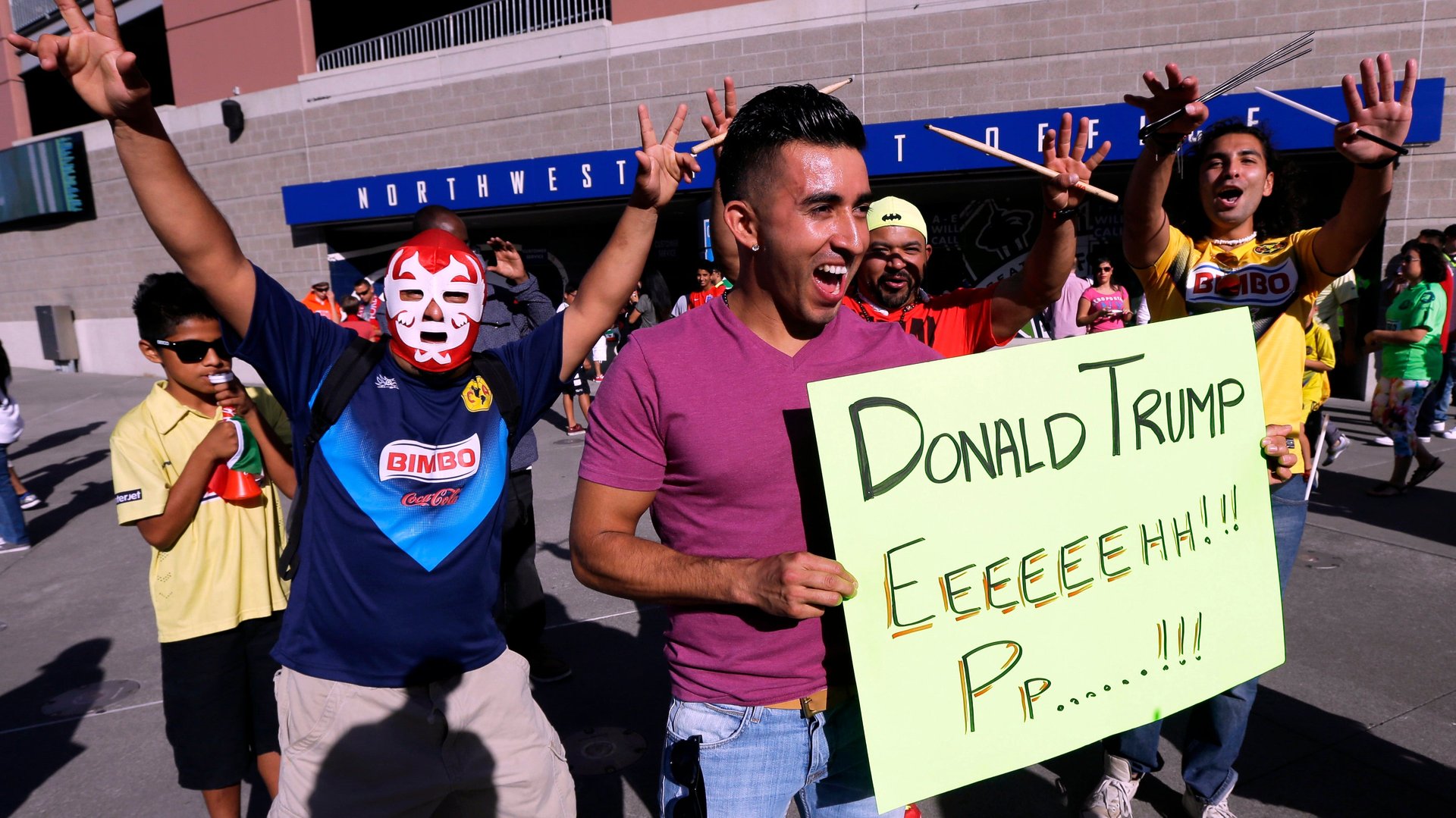Forget Trump’s wall, Mexico and the US are plotting a joint 2026 World Cup bid
It’s a nightmare come true for Donald Trump’s supporters: A joint US-Mexican plot to bring hundreds of foreigners across the border for a global tournament of an “un-American” sport.


It’s a nightmare come true for Donald Trump’s supporters: A joint US-Mexican plot to bring hundreds of foreigners across the border for a global tournament of an “un-American” sport.
But news of a shared bid to host the 2026 World Cup underscores just how much Trump’s movement—and his push to build a massive wall between the two countries—is a reaction to the dominant social trends in the US. These include a growing Latino population and widening appreciation for the sport of soccer, as well as its money-making opportunities.
The potential joint bid was hatched at a congress held by FIFA, world soccer’s global governing body, in Mexico last week. If the two countries cooperate to host the international soccer championship, it would be the first shared effort to put on the world’s most popular sporting event since Japan and South Korea in 2002.
Members of both federations said that each is prepared to offer an independent bid, but that a joint bid would likely make their proposals more attractive to the new FIFA president, Gianni Infantino.
The World Cup is due to be hosted by a country in their soccer region, which includes North and Central America as well as the Caribbean, but some FIFA officials remain upset with the United States after US law enforcement unmasked the deep-set corruption in the organization last year. Mexico, meanwhile, is a comparatively small sports market, so linking up with the US could bolster the financial prospects of the tournament, always a concern to FIFA officials.
Indeed, Mexico’s national soccer team is already represented by Soccer United Marketing, a US company that also markets the US national team and Major League Soccer. One reason behind the arrangement is that it allows the Mexican federation to host international exhibition games at US stadiums, which generates more revenue than similar games held in Mexico.
And that is just the beginning of the linkage between US and Mexican soccer, which reflect the deep economic and social ties between the two countries. Though the bitter rivalry between the two national teams, generally the best in their soccer region, sets the tone on the field, Mexican-American prospects are sought after by both national teams, and top American and Mexican players populate both country’s professional leagues, Liga MX and Major League Soccer.
Though Mexican fans tend to dominate the crowds at US-Mexico matches held north of the border, much to the chagrin of the Americans, there are still American sporting heroes in Mexico. Graham Zusi, a US player, enjoyed a spell as a folk hero after a last-minute goal in a match against Panama gave the Mexican national team a final chance to qualify for the World Cup in 2014.
While it’s still early days for the 2026 bid, we’ll get something of a preview this summer when the US hosts a special centennial edition of the Copa America, a tournament of the best South American soccer teams. It’s safe to say Argentina’s fans have already noticed Trump’s rhetoric: